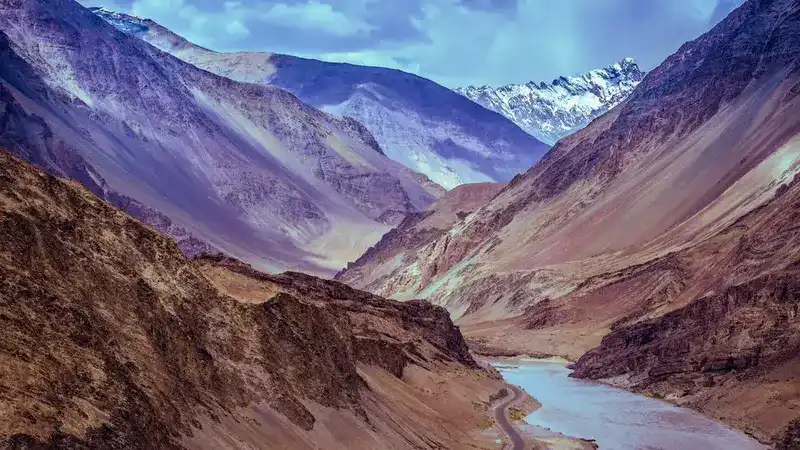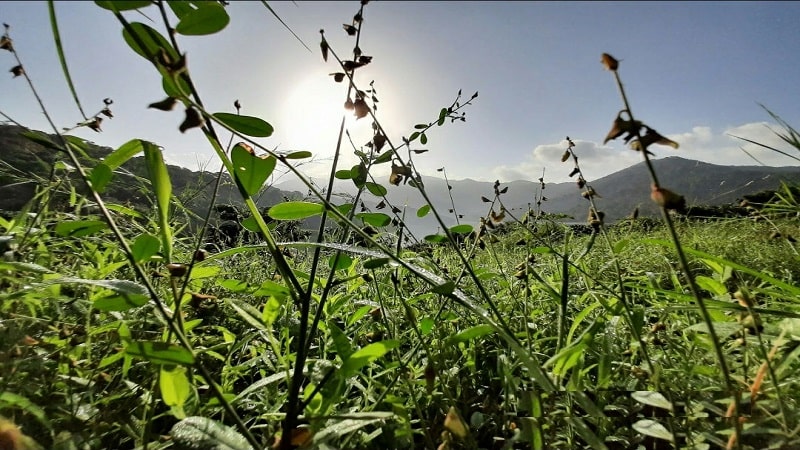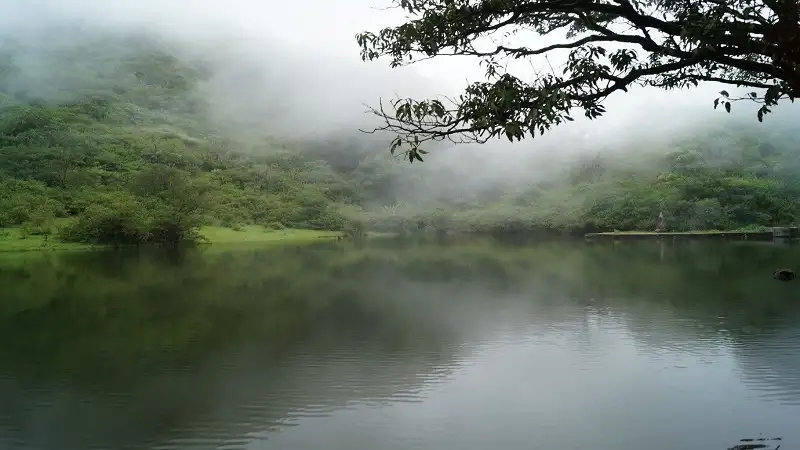With its balmy temperatures and blossoming landscapes, April marks spring onset across India. As nature comes alive and the sun casts a warm glow, this month presents an ideal opportunity to embark on a journey of exploration and discovery.
From serene hill stations to cultural hubs, this article lists 10 exquisite Indian cities to visit in April, each offering a unique blend of experiences that will leave you captivated and enriched.
1. Ooty, Tamil Nadu

Reference: https://unsplash.com/photos/vY8O3BbR3KU
Known as the “Queen of Hill Stations,” Ooty is a haven of tranquility in April. The Nilgiri Hills come alive with vibrant flora, making it an ideal time to explore the lush landscapes, enjoy boat rides on Ooty Lake, and savor the refreshing climate.
Ooty’s picturesque landscapes are nothing short of a painter’s masterpiece. As April
ushers in the spring, the hills come alive with a riot of colors as wildflowers bloom and trees don a fresh coat of leaves. The lush Nilgiri forests provide a wildlife sanctuary, and you may even spot various bird species as you explore the pathways that wind through the hills.
Ooty is renowned for its tea gardens, which have become integral to the region’s identity. A visit to the tea plantations offers a chance to witness the meticulous process of tea cultivation, plucking, and processing. The rolling hills adorned with neatly manicured tea bushes create a mesmerizing sight perfect for capturing breathtaking photographs.
A ride on the Nilgiri Mountain Railway, a UNESCO World Heritage Site, is a nostalgic journey back to the colonial era. The quaint blue train chugs along the narrow tracks, offering panoramic views of the hills, valleys, and quaint villages. The slow-paced journey allows you to savor the beauty of the Nilgiris at a leisurely pace.
2. Guwahati, Assam

Reference: https://unsplash.com/photos/mhJODzwzCtg
April in Guwahati brings with it the celebration of Rongali Bihu, Assam’s harvest festival. The city comes alive with traditional dance, music, and cultural performances. Explore the Kamakhya Temple, cruise on the Brahmaputra River, and immerse yourself in Assam’s rich cultural heritage.
Guwahati serves as the primary entry point to the Northeastern states of India. Its well-connected transportation links make it an ideal starting point for exploring the region’s diverse landscapes, cultures, and traditions.
One of the most revered temples in India, the Kamakhya Temple is a spiritual oasis atop Nilachal Hill. Dedicated to the goddess Kamakhya, this ancient temple attracts pilgrims and tourists alike. The unique architecture, rituals, and panoramic views of the city from the hill make it a must-visit destination.
A short boat ride from the city, Umananda Island is home to the Umananda Temple, dedicated to Lord Shiva. As you cross the Brahmaputra’s tranquil waters, you’ll reach this serene island, which offers a peaceful escape from the bustling city. The temple, perched atop a hill, provides breathtaking views of the river and the surrounding landscapes.
Guwahati comes alive in April to celebrate Rongali Bihu, Assam’s most vibrant festival. Marking the Assamese New Year and the harvest season, the festival is a riot of colors, traditional dances like Bihu and Husori, and community feasts. The city becomes a cultural hub as locals and visitors gather to enjoy the festivities.
3. Pachmarhi, Madhya Pradesh
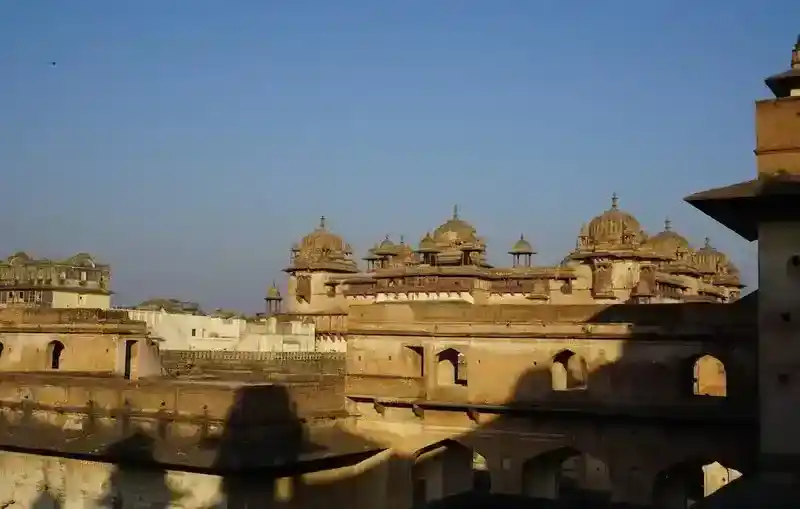
Reference: https://unsplash.com/photos/v9-m3r6jEl0
Pachmarhi, often called the “Satpura Ki Rani,” is a hidden gem in the Satpura Range. The region’s lush forests and cascading waterfalls offer a scenic escape in April.
Embark on nature trails, visit the Pandav Caves, and relish the serene beauty.
The landscape of Pachmarhi is a testament to nature’s artistic brilliance. Rolling hills, dense forests, and meandering streams paint a picture of serenity. Jatashankar, a natural cave temple complex, is a major attraction known for its unique formations that resemble the matted locks of Lord Shiva.
Pachmarhi is dotted with enchanting waterfalls that come alive during the monsoon and remain equally captivating in April. The Bee Fall, Duchess Fall, and Apsara Fall are prominent cascades offering refreshing retreats amidst the greenery. A visit to these waterfalls is not just about witnessing their beauty but also about soaking in the natural tranquility that surrounds them.
4. Gulbarga, Karnataka
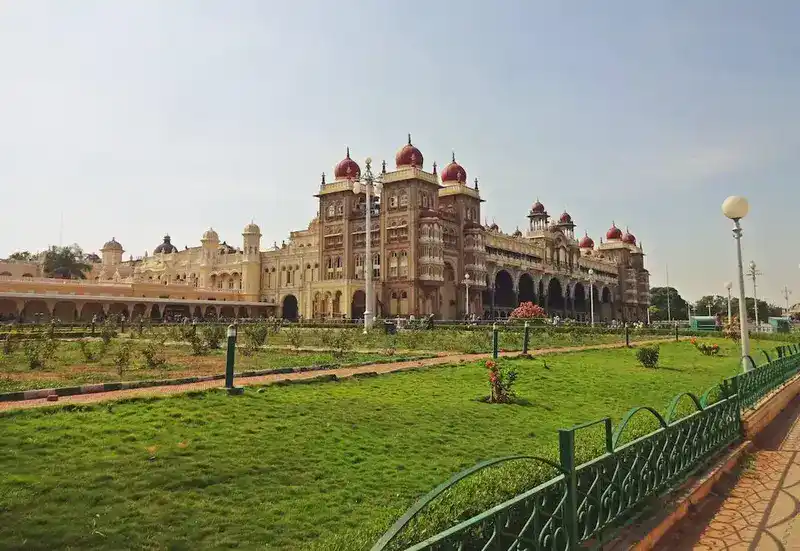
April is an auspicious time to visit Gulbarga as it hosts the grand Urs festival at the historic Khwaja Banda Nawaz Dargah. Prayers, qawwali performances, and a vibrant atmosphere of devotion and harmony mark this Sufi celebration.
Gulbarga is best known for its spiritual heritage. The city is home to numerous religious sites that attract pilgrims from all walks of life. The Khwaja Banda Nawaz Dargah, dedicated to the revered Sufi saint, is a significant center of spirituality and devotion.
The annual Urs festival held at the Dargah draws thousands of devotees, both Muslims and people of other faiths, who come to seek blessings and partake in the celebrations.
Gulbarga’s culinary landscape is a reflection of its diverse culture. The city is known for its distinctive cuisine, which offers a blend of flavors and ingredients influenced by its history and geographical location.
One of the most famous dishes is “Tahari,” a flavorful rice preparation often accompanied by yogurt-based gravies and delectable kebabs. Exploring the local eateries and street food stalls is a delightful culinary adventure.
Gulbarga comes alive with vibrant festivals that celebrate its cultural heritage. Apart from the Urs festival, the city hosts various events that showcase its diverse traditions. The Gulbarga Ganesh Festival is a grand affair, marked by elaborate processions and cultural performances, attracting both locals and tourists.
5. Agartala, Tripura

Reference: https://unsplash.com/photos/Vfvpri0xjow
Agartala is a city steeped in history and cultural richness. In April, the city celebrates Ashokastami, a religious event marked by a grand procession of Lord Tripura Sundari,
the presiding deity of the state. Immerse yourself in the festivities and explore the Ujjayanta Palace and Neermahal Palace.
One of Agartala’s most iconic landmarks is the Ujjayanta Palace, a testament to the state’s royal heritage. This sprawling white palace, set amidst lush gardens, blends Mughal and European architectural styles. Today, the palace has been transformed into a museum, offering visitors a glimpse into the opulent lifestyle of the erstwhile Maharajas of Tripura.
Floating gracefully on the tranquil Rudrasagar Lake, the Neermahal Palace is another architectural marvel that adorns Agartala’s landscape.
This water palace, reminiscent of the grandeur of Rajasthan’s Lake Palace, is a popular tourist attraction. A boat ride to the palace offers a serene and picturesque journey, allowing you to soak in the scenic beauty of the lake and its surroundings.
Nature enthusiasts will find solace in the Sipahijola Wildlife Sanctuary, a biodiversity and ecological preservation haven. Spread across lush green landscapes; the sanctuary is home to various species of flora and fauna. Visitors can explore the park through walking trails, birdwatching, and even boating on the lake.
6. Coorg Karnataka

Reference: https://unsplash.com/photos/R-Zi_apFVsY
April is the perfect time to explore the picturesque landscapes of Coorg. The coffee plantations, mist-covered hills, and lush valleys create a mesmerizing setting. Visit Abbey Falls, experience a coffee plantation tour, and indulge in the region’s delectable cuisine.
Coorg is renowned for its sprawling coffee plantations that stretch as far as the eye can see. The plantations are a sight to behold, with neatly aligned coffee bushes and the sweet aroma of coffee beans filling the air.
A walk through these plantations is a sensory experience, where you can witness the coffee-making process firsthand and even sample freshly brewed coffee. The region’s natural beauty is equally captivating, with misty hills, cascading waterfalls, and vibrant flora and fauna.
The Abbey Falls, Iruppu Falls, and Mallalli Falls are just a few breathtaking waterfalls that adorn the landscape. The Nagarhole National Park and Dubare Elephant Camp offer opportunities to spot wildlife and connect with nature.
Coorg’s undulating terrain and lush forests make it a haven for trekkers and adventure seekers. Trails like the Tadiandamol Trek, which leads to the highest peak in Coorg, offer a challenging hike and panoramic views of the surrounding hills and valleys. The Brahmagiri Wildlife Sanctuary is another popular trekking destination, allowing you to immerse yourself in the region’s diverse ecosystem.
7. Kohima, Nagaland
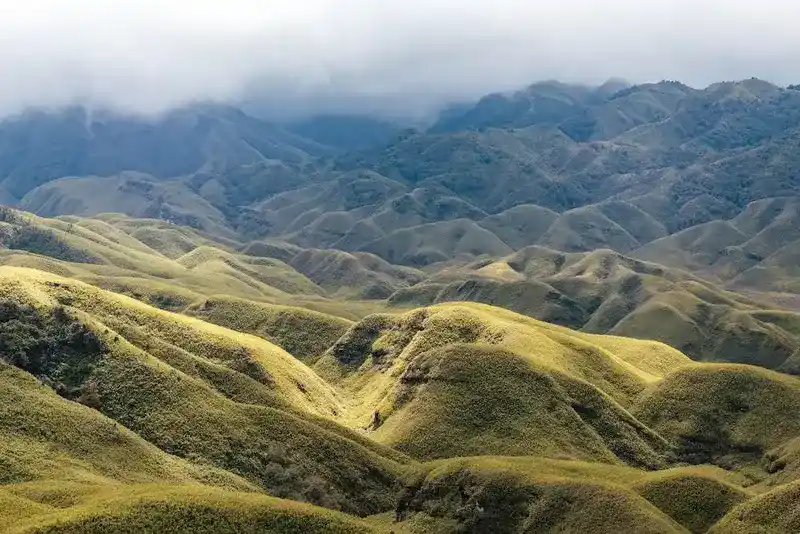
Reference: https://unsplash.com/photos/8l5FO4jbMv0
Kohima’s allure extends into April with its captivating landscapes and vibrant culture. The Hornbill Festival showcases the traditions of Nagaland, including tribal dances, indigenous crafts, and local cuisine. Immerse yourself in the festivities and explore Kohima War Cemetery.
Kohima holds historical significance as the site of the Battle of Kohima during World War II, which marked a turning point in the war’s Southeast Asian theater. The Kohima War Cemetery is a poignant tribute to the soldiers who made the ultimate sacrifice.
The well-maintained cemetery and memorial offer a solemn space for reflection and remembrance. Visitors can pay their respects and learn about the courage and resilience displayed during those challenging times.
The Naga Heritage Village in Kisama, just outside Kohima, is another window into the state’s rich heritage. This cultural center features traditional Naga houses and artifacts, providing insights into the distinct lifestyles and customs of various Naga tribes. The venue also hosts the Hornbill Festival, the perfect backdrop for celebrating Nagaland’s cultural diversity.
8. Konark, Odisha

The Sun Temple in Konark is a UNESCO World Heritage Site and a magnificent architectural marvel. April’s moderate temperatures allow you to explore the intricately carved temple and the nearby Chandrabhaga Beach.
The Sun Temple, also known as the Konark Temple, is a true masterpiece of ancient Indian architecture. Built-in the 13th century by King Narasimhadeva I of the Eastern Ganga dynasty, the temple is dedicated to Surya, the sun god.
Its intricate and ornate design is a stunning fusion of art, science, and spirituality. The temple is designed as a colossal chariot with intricately carved wheels, walls, and sculptures that depict mythological stories, celestial beings, and everyday life of that era.
For those interested in maritime history, the Konark Maritime Museum offers an insightful journey into Odisha’s seafaring past. The museum showcases a remarkable collection of maritime artifacts, sculptures, and exhibits that shed light on the region’s maritime trade and connections with distant lands.
9. Varkala, Kerala
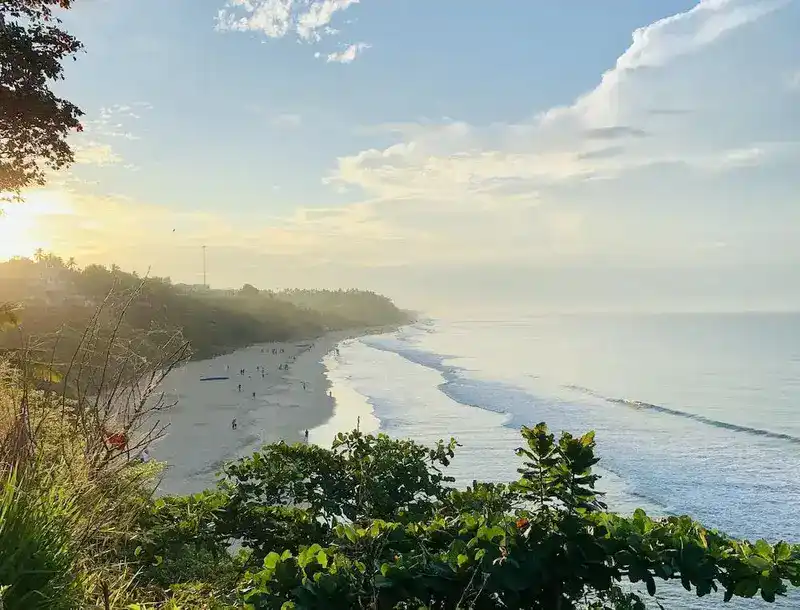
Reference: https://unsplash.com/photos/CtqSoMZY7c8
Varkala’s stunning coastal cliffs and pristine beaches are a treat in April. The pleasant weather is perfect for beach activities, exploring the Janardanaswamy Temple, and indulging in Ayurvedic treatments.
Varkala is renowned for its striking red cliffs that stretch along the shoreline, creating a dramatic and awe-inspiring backdrop.
Walking along the cliffside pathways, you’ll be treated to panoramic views of the endless azure sea. Papanasam Beach, nestled at the base of the cliffs, offers a serene escape where you can relax on the golden sands, listen to the gentle waves, and witness stunning sunsets that paint the sky in hues of orange and pink.
Varkala is not only a destination for beach lovers; it’s also a significant spiritual center. The Janardanaswamy Temple, dedicated to Lord Vishnu, is a prominent pilgrimage site where devotees seek blessings and solace.
The temple’s architecture and vibrant rituals glimpse the region’s rich cultural and religious heritage. Varkala offers a holistic approach to well-being through Ayurveda, an ancient system of natural healing.
The town is dotted with Ayurvedic wellness centers and spas offering therapies, treatments, and massages designed to rejuvenate the mind, body, and soul. Varkala’s Ayurvedic offerings provide a harmonious blend of relaxation and rejuvenation, from traditional massages to personalized wellness programs.
10. Trichy Tamil Nadu

Reference: https://unsplash.com/photos/QXIBCvvA_jc
Trichy’s rich history and architectural wonders make it an intriguing destination in April. Visit the iconic Rock Fort Temple, explore the Srirangam Temple complex, and witness the grand Chithirai Festival at the Sri Ranganathaswamy Temple.
Trichy boasts an array of architectural wonders that tell the tale of its illustrious past.
The most iconic of these is the Rock Fort Temple, an ancient complex perched atop a massive rock outcrop.
The temple complex houses a labyrinth of shrines and offers breathtaking panoramic city views. The journey to the top involves climbing a series of steep steps, adding an element of adventure to the spiritual experience.
Another architectural gem is the Sri Ranganathaswamy Temple in Srirangam, an island town within Trichy. This colossal temple is dedicated to Lord Vishnu and is renowned for its intricate carvings, massive gopurams (towering gateways), and vibrant festivals. The temple’s annual Chithirai Festival celebrated in April, attracts devotees and tourists alike, offering a glimpse into the region’s religious fervor and cultural vibrancy.
Final Words
April presents many travel opportunities across India, each city offering a unique blend of natural beauty, cultural festivities, and historical richness.
Whether you’re drawn to the vibrant celebrations of Guwahati or the serene landscapes of Pachmarhi, these 10 exquisite cities invite you to embark on a journey of discovery, celebration, and rejuvenation amidst the enchanting tapestry of India.











